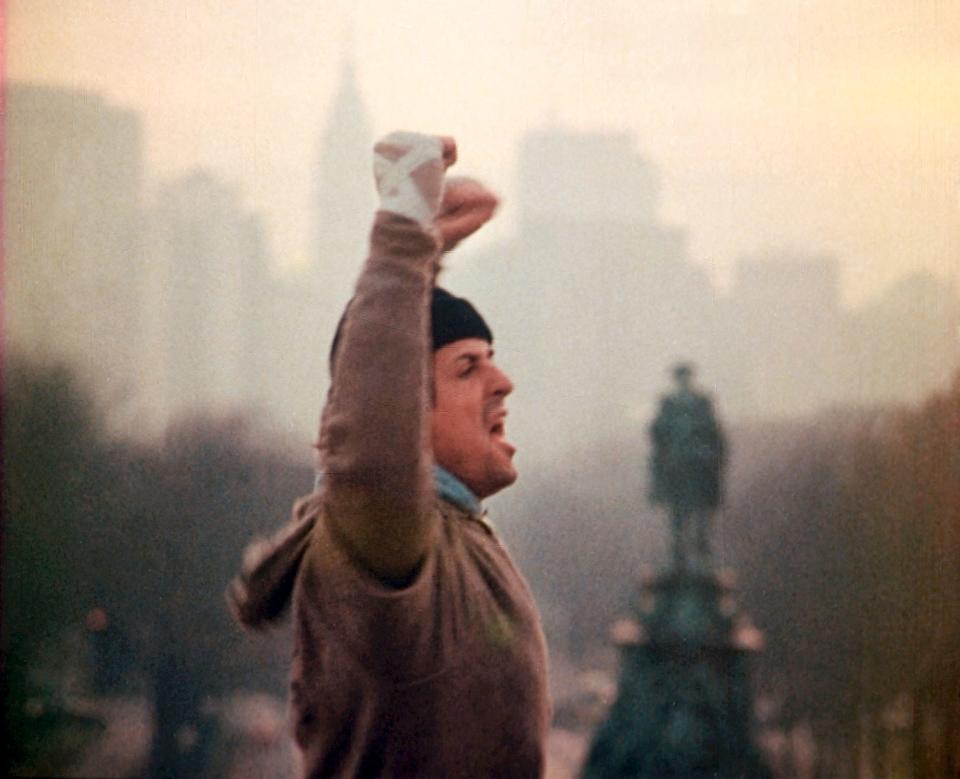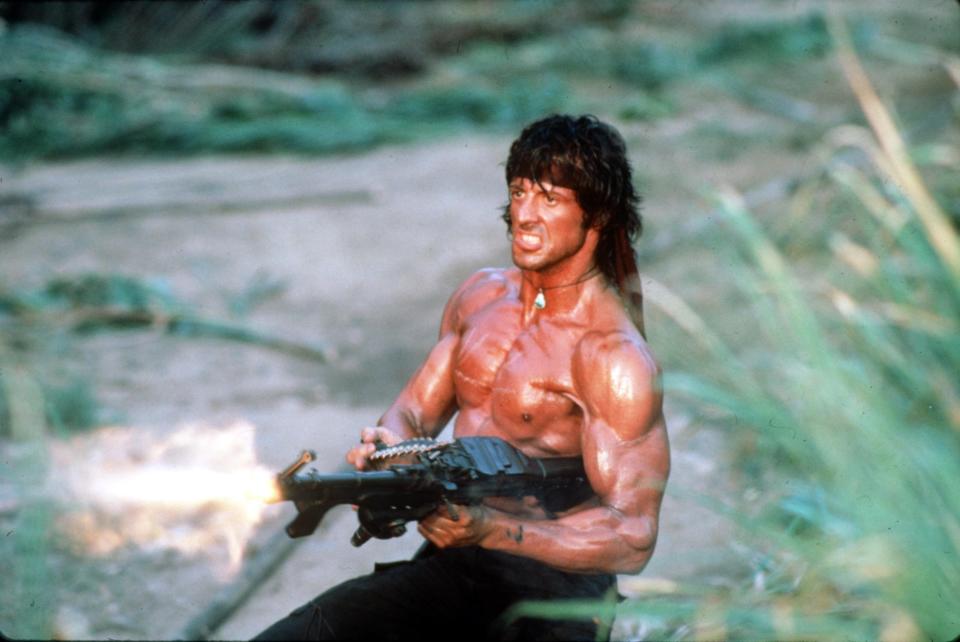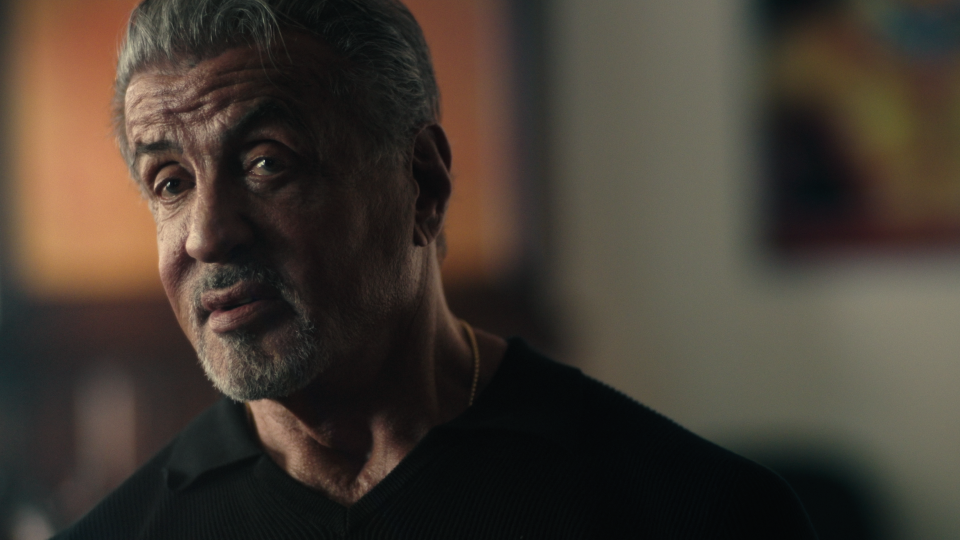'Sly': The best revelations from Netflix's new Sylvester Stallone documentary
Thom Zimny found himself of two complementary minds directing a documentary about cinema icon Sylvester Stallone: the veteran filmmaker crafting a universal story of self-discovery, and the former teenager thrilled by seeing “Rocky” for the first time.
Making Netflix’s “Sly” (streaming now), Zimny recalls inviting Stallone into his edit room so he could help unpack images and clips from his life during one of their many interviews. At times, “I would just step out and let that adolescent 16-year-old look at the moment and that beauty of Sly.”
The documentary, which closed this year’s Toronto International Film Festival, chronicles Stallone’s 77-year life and long career: He brought legendary characters like underdog boxer Rocky Balboa and Vietnam vet John Rambo to life, found his artistic voice through screenwriting and navigated hardships and obstacles in pursuit of his creative dreams. As Stallone says in the film, “Don’t sit there and try to do Shakespeare when you look like me.”

Stallone’s story isn’t one of chasing fame. “It was chasing an understanding of who he was in the world and all the things that he went through,” says Zimny, who’s also directed documentaries on Bruce Springsteen, Johnny Cash and Elvis Presley. “I’ve loved all (Stallone’s) films since childhood, but I started to realize in the making of this that I was getting a side of a man that just had not been seen before.”
Zimny discusses some of the most interesting revelations in “Sly.”
Sylvester Stallone has an unbelievable amount of his own memorabilia
“Sly” finds the actor/filmmaker readying for a move and that means packing up an enormous amount of stuff in his house: old scripts, action figures, busts and paintings of Rocky and Rambo and other Stallone paraphernalia. “I immediately embraced that as a plot point, because moving is such a great symbol of transition, change and all those obvious things,” says Zimny, who makes an “amazing” moment of movers carrying out a huge Rocky statue.
Stallone’s office even becomes a character in the movie, Zimny says. “These items of memorabilia or memory, of objects that were used in the movies, these are part of my storytelling devices. I really picked that up in my work with Bruce Springsteen, where you stop and you look around and you realize what the gods are throwing you.”
'The Family Stallone' drama: 'Rambo' dad Sylvester is 'traumatizing' on daughters' dates
The ‘Rocky’ movies mirrored developments in Sly Stallone’s own life

Stallone became a household name with the original 1976 “Rocky,” and Stallone details in "Sly" how that film, and the iconic boxer's subsequent chapters, reflected the desires and difficulties the actor was going through when they were made. (Rocky dealt with extra responsibility in “Rocky II” and needed to trust his own instincts in “Rocky III.”) But pulling off the first film was a minor miracle, as Stallone fought tooth and nail to keep the title role amid eleventh-hour casting changes.
In the doc, Stallone stops by the New York City movie theater where he once worked as an usher, which also hosted the “Rocky” premiere. “There's a photograph of Sly standing outside the theater before he's famous, and it's the last image of him before his life changes,” Zimny says, adding that like Rocky, Stallone's "a guy who refused to back down or be told he couldn't do it. It's a very inspiring story on many levels. It's a theme that you find again and again throughout his life, that journey of pushing himself.”
'Creed III': Every 'Rocky' movie, definitively ranked
Sly Stallone's complicated relationship with his father influenced Rocky and Rambo

Stallone admits in “Sly” that he’s in “the hope business,” and when crafting the personas of Rocky and John Rambo (for 1982's “First Blood”), offering it was key. The characters also reflect aspects of Stallone’s father Frank, a World War II veteran who gave his son a ferocious side. A frequent theme in the documentary is their complicated relationship, from Stallone’s constant search for his dad's love to patching things up on his death bed.
Stallone “spoke about his dad in a way that really conveyed both the love and some of the traumatic moments that they had together. But more importantly, the impact that it made on him in the moment and the work,” Zimny says. “When you sit with Sly and he discusses that his father was Rambo, and then he holds up the image of Rambo and a photo of his father, that brought my understanding of Sly as a filmmaker to a whole other level.”
The 'Sly' documentary chronicles a Hollywood legend in a reflective mood, not a retiring one

“Sly” takes the audience through all of Stallone’s greatest career hits and misses, as well as ups and downs in his personal life. These days, he says he wants to be a “really good juggler” in balancing his life, family and art, but Zimny’s movie captures a man who's far from his swan song.
“He's not in the space of reliving glory days,” says Zimny, who did some of his interviews while Stallone was filming his Paramount+ series “Tulsa King." He was a very busy, very energetic, very alive-in-the-moment working filmmaker, (and) at times I would recognize the vibe of it from early ‘Rocky’ films. It was the same guy. I don't see him as settling, and this film was catching up with him for a minute to reflect, if anything.”
This article originally appeared on USA TODAY: 'Sly' Netflix documentary reveals Sylvester Stallone's inspiring side
